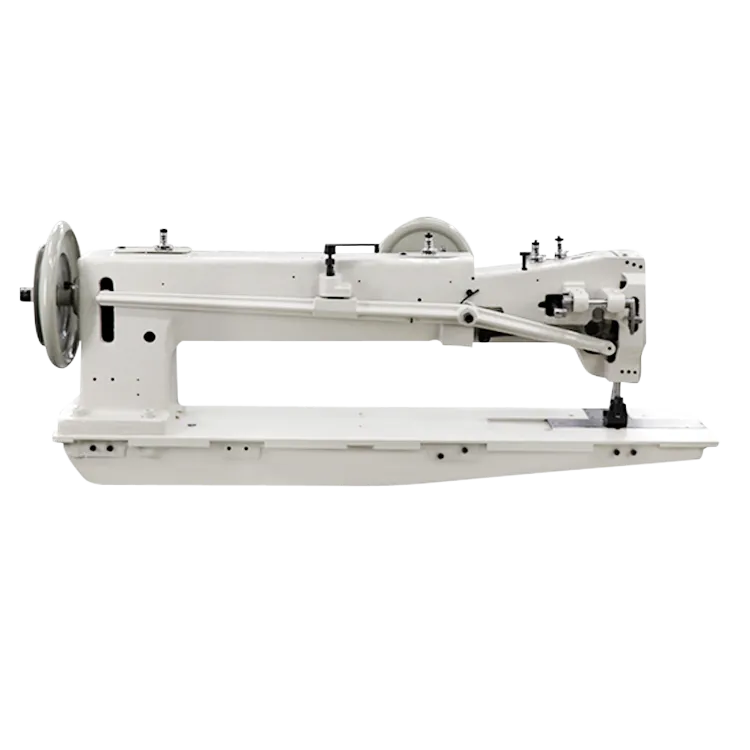sewing machine leather upholstery
Mastering Leather Upholstery with a Sewing Machine
Leather upholstery is a popular choice for furniture, car interiors, and various decorative items due to its durability, aesthetic appeal, and timeless elegance. Whether you’re a seasoned sewing enthusiast or a beginner, learning how to sew leather upholstery using a sewing machine can open up a world of creative possibilities. This article will guide you through the essentials of sewing leather, offering tips and techniques to help you achieve professional-looking results.
Understanding Your Materials
Before you start stitching, it's crucial to select the right type of leather for your project. Leather comes in various grades, such as top-grain, full-grain, and bonded leather, each offering different qualities and prices. Top-grain leather is the most popular option for upholstery work, known for its balance of durability and softness. Full-grain leather, while more expensive, boasts unparalleled quality and character. Bonded leather, made from assorted scraps, is a budget-friendly alternative but may not offer the same longevity.
Choosing the Right Sewing Machine
Not all sewing machines are created equal, especially when it comes to sewing leather. It's essential to have a machine with a strong motor and capable of handling thick materials. A walking foot or a roller foot attachment can greatly assist in managing the weight of leather, preventing it from slipping during sewing. Additionally, consider using a heavy-duty needle, specifically designed for leather, as this will help penetrate the thick material without causing any damage.
Preparing Your Workspace
Creating a conducive workspace is vital when sewing leather upholstery. Ensure your work area is clean and well-lit to avoid any distractions. Use a cutting mat or a thick piece of cardboard to protect your work surface from knife marks or scratches while cutting leather. Always use a sharp utility knife or rotary cutter to achieve clean edges, which will make sewing easier and provide a more polished appearance.
Cutting the Leather
When cutting leather, it is important to plan your pattern pieces carefully. Unlike fabric, leather cannot easily be re-cut, so precision is key. Use a ruler or a straight edge to guide your cuts and ensure that you cut along the grain for the best results. If your project involves multiple pieces, label each section clearly to avoid confusion during the sewing process.
Sewing Techniques
sewing machine leather upholstery

When it comes to sewing leather upholstery, certain techniques can enhance your results
1. Use Proper Stitching A straight stitch is often adequate for leather, but if you want to add a decorative touch, consider using a zigzag stitch or a leather-specific stitch pattern. Always test your stitch on a scrap piece of leather first.
2. Space Your Stitches When sewing leather, keep a consistent distance between your stitches. This not only aids in aesthetics but also helps maintain the integrity of the seams.
3. Avoid Pinning Traditional pins can leave small holes in leather and risk damaging it. Instead, use binder clips or double-sided tape to hold pieces together while sewing.
4. Use a Teflon Foot A Teflon presser foot can be invaluable when working with leather, as it allows the leather to glide smoothly through the machine without sticking.
5. Finish the Edges To give your project a polished finish, consider using edge finishers that smooth and seal the edges of your leather pieces.
Final Touches
After sewing, take the time to clean and condition your leather upholstery. Use a leather conditioner to restore moisture and prevent cracking, ensuring that your project remains in excellent condition for years to come. Always allow ample drying time for any products you apply.
Conclusion
Sewing leather upholstery can be a rewarding endeavor that enhances your home or vehicle and allows for personalized touches. With the right tools, techniques, and a little practice, you can master the art of leather upholstery and create beautiful, durable items that will stand the test of time. Whether you're crafting a simple cushion cover or upholstered furniture, the skills you develop will be invaluable for future projects. Happy sewing!
-
Industrial Cylinder Arm Sewing Machine: Revolutionizing Heavy-Duty SewingNewsJul.28,2025
-
Cylinder Arm Sewing Machine: Perfect for Special Sewing ApplicationsNewsJul.28,2025
-
Cylinder Bed Sewing Machine: Essential for Sewing Complex MaterialsNewsJul.28,2025
-
Heavy Duty Sewing Machine: The Essential Tool for Industrial ApplicationsNewsJul.28,2025
-
Computerized Pattern Sewing Machine: Revolutionizing Precision StitchingNewsJul.28,2025
-
Heavy Duty Industrial Sewing Machine: Power Meets PrecisionNewsJul.28,2025
-
Leather Sewing Machine: The Industrial Standard for Tough MaterialsNewsJul.18,2025





























